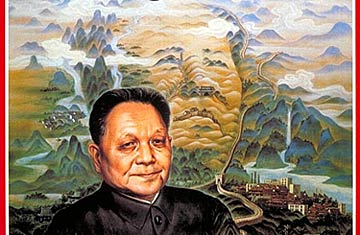
(7 of 20)
For sweep of terror, China under the Cultural Revolution was the equivalent of Nazi Germany. Thugs, Red Guard bands and idealists fought in the cities, all rivaling one another to show loyalty to Mao Thought. Stories from the interior convey the sweep of the violence. In Chengdu, capital of Sichuan, the handsome old government palace was blown to bits by Red Guards; in its place they erected a new hall filled only with portraits of Mao. In Chongqing, workers fought each other with machine guns, artillery, armored cars and tanks. In Harbin, the factions used air planes to bomb each other. In Peking, Red Guards stormed and burned the British embassy. In Wuhan, center of the great iron and steel complex as well as of several universities, steelworkers shaped up in three rival bands, while universities formed rival student bands, all warring within and against one another.
So millions suffered. There is no real count of those who died. The final official record says that 34,800 innocent people were put to death and 729,511 subjected to "unwarranted persecution." This takes no account of how many others died —bystanders at riots, those huddling under bombs or artillery, individuals stoned, beaten or stabbed to death.
Common sense itself revolted. The new dogma had not worked and it could not work. So the aging generals of the Civil War and Liberation had to move in, as they did on the night of Oct. 6, 1976.
FALL OF A DYNASTY
Chou Enlai, the last effective rational member of the inner circle, had died in January 1976. Twelve weeks later came the ceremonies of Qingming at which the Chinese honor their dead. Spontaneously, on April 1, thousands thronged Tiananmen Square to mourn him. The next day, more. Then again the following day and the day after, hundreds of thousands, in silent protest against the tyranny of the Gang of Four. Somehow Chou had come to be the symbol of the true faith of the original revolution. In July Chu Teh commander in chief of the revolution's armies, died. Then came the Tangshan earthquake — and in Chinese folklore great earthquakes always foretell the fall of a dynasty. Finally, on Sept. 9, Mao died, and it was time for someone to move. Either the Gang of Four would wipe out the last resistance and Jiang Qing would reign, or the veterans of the revolution would wipe out the Gang of Four. A classic case of "us" or "them," as tight as the events of 9 Thermidor, 1794, when it became a matter of life or death for members of France's revolutionary Convention: Robespierre would get them, or they would get him.
There is as yet no authentic story of the night of the coup and there may never be. Ye Jianying and Li Xiannian, both old marshals, led the coup. But I rest my knowledge only on the sum phrases I squeezed out of the deputy chief of staff of the army at the time—General Wu Xiuquan, now retired and old. "We controlled the garrison," he said. "We moved into Zhongnanhai (the imperial quarters). No bloodshed, no resistance. We arrested the four, one by one, in their homes." The people of China had had enough of the madness and violence. Not until six days later, Oct. 12, did the people of China learn the madness was over, from BBC out of London, reporting what British intelligence had gathered. In the underground the crab had been the symbol for Jiang Qing. So
